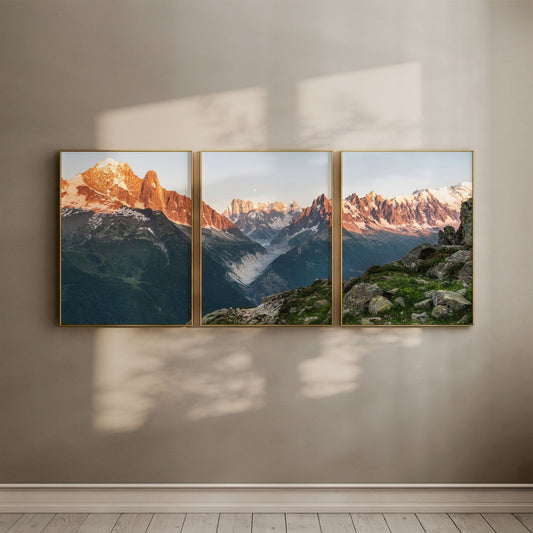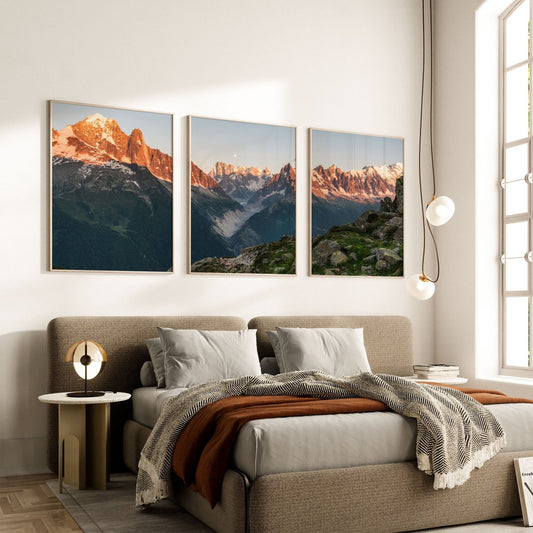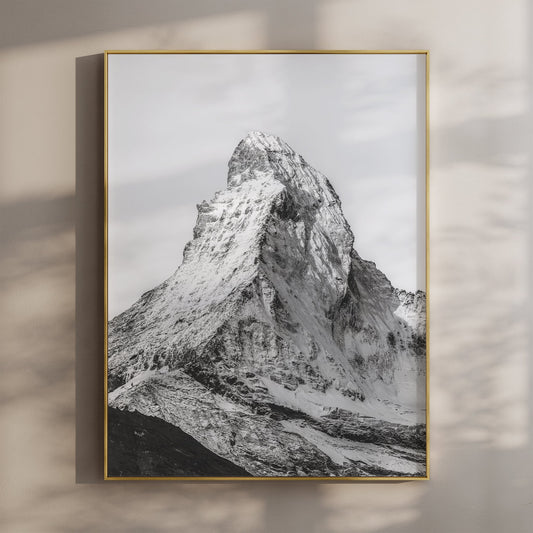How to Choose Your Perfect Frame: A Comprehensive Guide
Share
Choosing the right frame for your artwork is as essential as selecting the art itself. A well-chosen frame not only protects your piece but also enhances its visual appeal, complementing both the artwork and your home decor. Here’s everything you need to know about selecting the perfect frame, including pricing, styles, materials, durability, and protective glass options.

1. Understanding Pricing Options
Frames come in a wide range of prices, from budget-friendly to high-end custom designs. Your choice should reflect both your financial considerations and the value of the artwork you're framing.
Budget-Friendly Frames
- Best for: Posters, prints, or temporary displays.
- Materials: Often made of lightweight plastic or MDF (medium-density fiberboard).
- Price Range: €10–€50.
- Durability: Suitable for low-traffic areas or short-term use. They may warp over time with exposure to humidity.
Mid-Range Frames
- Best for: Family photographs, photography and art prints, or small original artworks.
- Materials: Typically crafted from wood or metal with higher-quality finishes.
- Price Range: €50–€200.
- Durability: Sturdy and versatile, these frames are an excellent balance between cost and quality.
High-End Custom Frames
- Best for: Valuable artwork, heirlooms, or statement pieces.
- Materials: Custom wood or metal frames with museum-grade glass and archival-quality mats.
- Price Range: €200 and up.
-
Durability: Built to last, these frames provide the highest level of protection and style.
2. Exploring Frame Styles
The style of the frame plays a significant role in how the artwork is perceived. Whether you prefer classic, ornate, or modern designs, selecting a frame that complements both the artwork and your interior décor is essential.
Classic Styles
- Description: Clean lines, neutral colours, and timeless appeal.
- Best for: Traditional or minimalist interiors.
- Tips: Opt for thin black or white frames for a sleek, understated look.
Ornate Styles
- Description: Decorative, detailed, and often vintage-inspired.
- Best for: Period pieces or homes with an eclectic aesthetic.
- Tips: Choose frames with gilded finishes or intricate carvings to elevate your artwork.
Modern Styles
- Description: Bold, geometric, and contemporary.
- Best for: Abstract art, modern prints, or industrial-themed spaces.
- Tips: Experiment with metallic frames or unconventional shapes to make a statement.

3. Choosing Frame Materials
Frames are typically made from wood, metal, or acrylic, each offering distinct aesthetics and benefits. Understanding the characteristics of each material will help you make an informed decision that suits your artwork and environment.
Wood Frames
- Pros: Warm, natural look; available in a variety of finishes.
- Cons: Can be heavy and susceptible to warping in humid conditions.
Metal Frames
- Pros: Sleek, modern appearance; lightweight and durable.
- Cons: Limited colour options and can dent more easily than wood.
Acrylic or Plastic Frames
- Pros: Affordable, lightweight, and easy to clean.
- Cons: Less durable and can appear less polished than wood or metal.
4. Durability Matters
The longevity of your frame is influenced by its construction quality and the environment in which it is placed. Considering factors like humidity, sunlight exposure, and maintenance will ensure your frame remains in excellent condition over time.
- Construction Quality: Ensure frames are well-constructed with sturdy joints and high-quality materials.
- Environmental Considerations: Avoid placing frames in direct sunlight or humid areas unless they are specially treated.
- Maintenance: Clean frames regularly and inspect for signs of wear or damage.
5. Glass and Protective Options
Standard Glass
- Best for: Everyday use and budget-friendly projects.
- Pros: Clear and inexpensive.
- Cons: Fragile and prone to glare.
UV-Protective Glass
- Best for: Valuable or light-sensitive artwork.
- Pros: Blocks harmful UV rays to prevent fading.
- Cons: More expensive than standard glass.
Acrylic Glazing
- Best for: Large frames or areas prone to accidents.
- Pros: Lightweight, shatter-resistant, and available with UV protection.
- Cons: Can scratch more easily than glass.
Non-Glare Glass
- Best for: Rooms with bright lighting or large windows.
- Pros: Reduces glare and enhances visibility.
- Cons: May slightly dull the vibrancy of colours.
6. Making Your Final Choice
The glazing you choose protects your artwork from dust, UV light, and physical damage. Options include standard glass, UV-protective glass, acrylic glazing, and non-glare glass, each offering different levels of protection and clarity.
- Match the Art: Ensure the frame complements the colours and style of your artwork.
- Consider the Space: Choose frames that enhance your room’s décor without overpowering it.
- Prioritise Protection: For valuable pieces, invest in high-quality frames with UV-protective glass and archival materials.
By considering factors like pricing, style, material, durability, and protection, you can confidently select frames that elevate your artwork and preserve it for years to come. Whether you’re framing a cherished photograph or a fine art piece, the right frame makes all the difference.






















